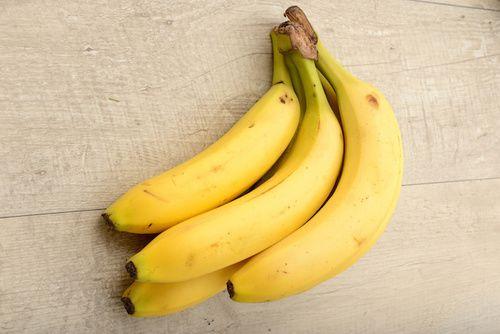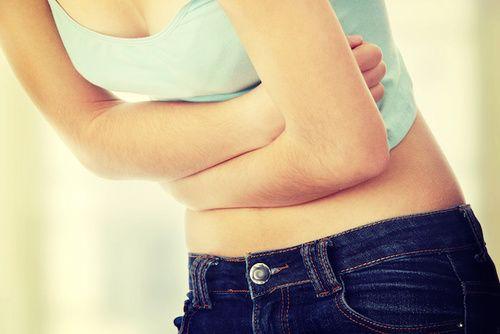, Naturopata Iridologa
Swollen belly? Lazy bowel or difficulty losing weight? If it blows bad air in your belly then you just need to taking prebiotics. Let's try to understand together what they are, in which foods we can find them and why our body needs them to be more beautiful and healthy.
> Where are prebiotics and their functions
> Contraindications of prebiotics
> What are prebiotic foods
Bananas among foods rich in prebiotics

What are prebiotics
It is easy to confuse prebiotics with probiotics and vice versa. Let's start by saying with certainty that one needs the other to "live". The former (prebiotics) are in fact the food for the sustenance of the latter (probiotics).
Prebiotics are non-digestible food "substances". More simply they are non-gelling water-soluble fibers (Non-starch polysaccharides and Oligo Fructosaccharides better known as "FOS") and non-digestible carbohydrates (Fruit and Galatto Oligosaccharides). Their task is to promote the growth of bacteria present in the intestinal environment by "feeding" them.
In order not to incur unpleasant phenomena (swelling and flatulence) it is necessary to take them in the quantity established by individual needs and by the general conditions of the organism.
Prebiotics can be placed in different "groups" of active substances such as the Fruit Oligosaccharides and the Inulins (they are the best known and of vegetable origin). Lactittol, Lactulose, Oligosaccharides (from soy) and Pyrodextrins.
Where are prebiotics and their functions
Prebiotics are found in manythe supplements for the regularization of the intestine together with enzymes (probiotics) but also in many foods that contain fiber useful for the normalization of intestinal functions. But not only. Prebiotics play a supporting role in the functioning of the metabolism and in keeping the immune system efficient together with probiotics.
People with diabetes or on a weight loss diet can rely on prebiotics for keep sugar levels low in the blood. In fact, prebiotics slow down the absorption of sugars and thus regulate appetite.
Contraindications of prebiotics
Prebiotics are not recommended in those who are lactose intolerant (some come from milk), those with irritable bowel syndrome (can make the disorder worse) and other specific bowel diseases.
Prebiotic foods among the remedies for constipation

Cibi prebiotics
We find prebiotics in bananas. This fruit is generally liked by everyone, adults and children. It is certainly the most popular, delicious and consumed fruit in the world for flavor, shape (often the object of laughter) and for the consistency of the pulp. The banana contains all the necessary nutrients to be considered a snack or a complete fasting break (the percentages present in carbohydrates, prebiotic fibers, fats and proteins are relevant). It is rich in magnesium and potassium (combined useful for regulating pressure and spring fatigue) and other minerals such as iron (therefore suitable for anemic and inappetent children). There is no shortage of vitamins E, C and those of group B. Therefore a dessert more than a fruit but also a natural tonic packaged in its golden yellow skin.
Il honey it is also called the gold of the gods. This precious "nectar" contains natural antibiotic substances, vitamins and minerals. Honey has sedative properties, therefore calms the most stubborn cough. The antibacterial and anti-inflammatory activity relieves the discomfort deriving from the bites of certain insects or certain skin diseases such as acne (source of study of essential fatty acids yet to be ascertained).
Dried fruit, especially walnuts, are very rich in minerals and prebiotic substances. Nuts are rich in amino acids (omega three). Shines with fame for good mineral content but also for the energy load, rather high. This is why, however healthy they may be, you shouldn't overdo it with their consumption. The right amount varies from six to ten fruits per day according to the constitution of the consumer. This "dot on the i" is valid for people overweight but it is a favorable condition for athletes and convalescents.
Wheat flour (preferably wholemeal) contains prebiotics but it is not indicated to those who are celiac or is sensitive to gluten.
The rather strong and pungent smell of garlic puts this “medical marvel” at the top of the list of dislikes of most. The semi-permanent “side effect” is the strong odor that exudes from the skin and from the breath of consumers due to the sulfur compounds contained in it. However, garlic has its host of fans who are perhaps aware of its virtues. Among these, it excels the antibiotic and blood pressure regulating activity. Contains traces of some minerals and vitamins. Do not miss the prebiotic function and the beneficial effect on the prostate. Therefore garlic performs fungicidal, bactericidal and antibiotic functions. Wheat germ is rich in B vitamins and insoluble fiber. Due to its content of vitamins E, D and omega three and six it is a good friend for woman's health and a strong ally for nourished skin and shiny, healthy hair.
Beans and legumes in general are very rich in prebiotic fibers. You must not exceed with their consumption because if the intestine is not in balance they can cause uncomfortable swelling. Legumes have forcefully returned to the fore on tables all over the world, honorably substituting meat. Legumes are indeed a good alternative to it. They contain amino acids, fiber, minerals and vitamins. They are satiating, sweep intestinal waste preventing colon cancer and are suitable for the preparation of versatile and tasty dishes. They also boast excellent health properties, lower cholesterol and triglycerides and regularize the intestine.
Asparagus has a systemic action on the body. They cleanse the intestines and purify the kidneys and liver. It is well known the draining, diuretic action and anti-inflammatory.
READ MORE
Prebiotic foods among functional foods: discover the others
Other articles on prebiotic foods:
> Prebiotic foods to purify the intestine: find out how
> Herpes cures: prebiotic foods and immunostimulating plants
> How to take care of the intestinal bacterial flora


























